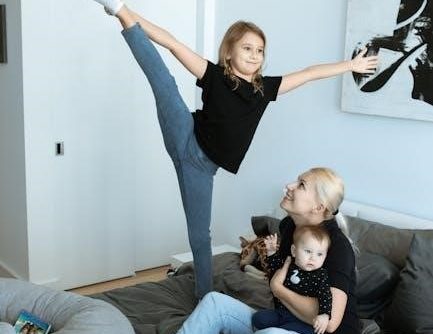
Family roles are patterns of behavior that fulfill family functions and needs, ensuring emotional and practical support. They help families operate smoothly, fostering stability and harmony among members.
1.1 Definition of Family Roles
Family roles are recurring patterns of behavior that individuals adopt to fulfill specific functions within their family system. These roles, often shaped by cultural norms, personal dynamics, and societal expectations, define how members contribute to the family’s emotional and practical needs. According to Epstein et al. (1993), family roles are “patterns of behavior by which individuals fulfill family functions and needs,” ensuring stability and harmony within the family structure.
1.2 Importance of Understanding Family Roles
Understanding family roles is crucial for fostering healthy dynamics and addressing dysfunctional patterns. Recognizing these roles helps identify how individuals contribute to the family system, enabling better communication and problem-solving. It also promotes emotional well-being by highlighting areas where roles may be limiting or harmful, allowing for positive change and growth within the family structure.
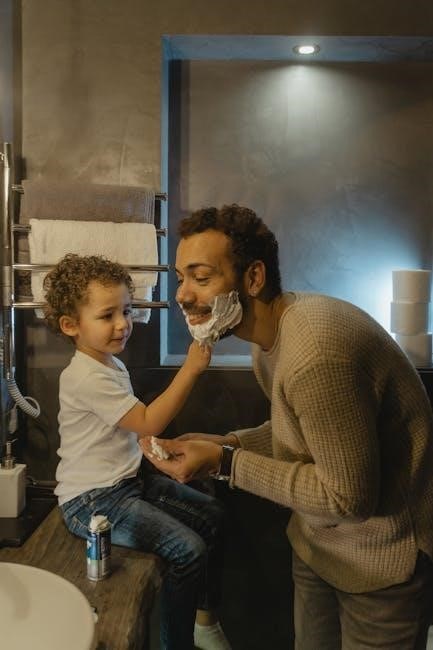
Types of Family Roles
Family roles are primarily categorized into instrumental and emotional types. Instrumental roles focus on providing resources and practical support, while emotional roles emphasize nurturing relationships and well-being within the family system.
2.1 Instrumental Roles
Instrumental roles focus on providing practical support and resources within the family. These roles ensure basic needs like food, shelter, and financial security are met. Often assumed by caregivers, these responsibilities include managing household tasks, budgeting, and maintaining order. Instrumental roles are essential for the family’s daily functioning and stability, enabling members to thrive by addressing physical and logistical needs effectively.
2.2 Emotional Roles
Emotional roles focus on providing emotional support, nurturing relationships, and maintaining harmony within the family. These roles involve empathy, active listening, and conflict resolution. They ensure family members feel valued, secure, and connected. Emotional roles often include mediating disputes, offering comfort, and fostering a sense of belonging. These roles are vital for the family’s emotional well-being and resilience, helping to create a supportive and loving environment for all members.
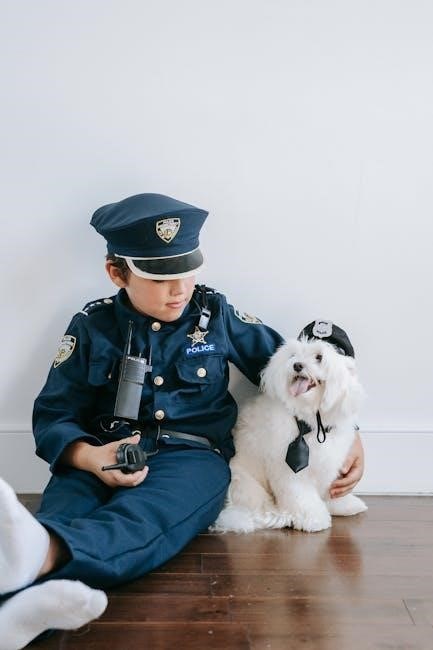
Dysfunctional Family Roles
Dysfunctional family roles emerge in response to stressors like addiction, creating rigid, harmful patterns. These roles distort family dynamics, hindering healthy communication and emotional well-being for all members.
3.1 The Addict
The addict is often the central figure in a dysfunctional family system, with their behavior dictating family dynamics. Their substance use or other addictive behaviors create chaos, leading family members to adopt enabling or compensatory roles. The addict’s actions dominate interactions, often overshadowing emotional needs and fostering codependency; This role disrupts healthy communication and stability, forcing others to adapt in harmful ways to cope with the addict’s unpredictability and demands.
3.2 The Chief Enabler
The Chief Enabler, often a family member, unconsciously supports the addict’s behavior by covering up or minimizing its impact. They take on excessive responsibilities, trying to maintain control and normalcy. This role prevents the addict from facing consequences, enabling their addiction. The enabler’s actions, though well-intentioned, perpetuate dysfunction, fostering codependency and hindering recovery. Over time, this role can lead to emotional exhaustion and strain on the enabler while allowing the addict to avoid accountability.
3.3 The Hero
The Hero is often the oldest child, taking on excessive responsibility to compensate for family dysfunction. They strive for perfection, achieving academically or socially to distract from the addict’s behavior. This role involves suppressing emotions and maintaining a positive image to avoid confrontation. The Hero’s actions, though well-intentioned, prevent the family from addressing underlying issues, leading to internal stress and potentially hindering their own emotional development and the family’s recovery process.
3.4 The Lost Child
The Lost Child detaches from the family, avoiding conflict and emotional engagement. They seek attention indirectly, often through passive or rebellious behavior. This role allows them to escape the family’s dysfunction but leaves them feeling invisible and unimportant. The Lost Child may struggle with low self-esteem and difficulty forming healthy relationships due to their emotional disconnection and lack of clear boundaries or validation within the family system.
3.5 The Mascot
The Mascot uses humor, cheerfulness, or entertaining behavior to distract from the family’s dysfunction. They often hide their true feelings and struggles, adopting a carefree attitude to maintain a sense of normalcy. While this role provides temporary relief, it prevents the family from addressing deeper issues. The Mascot may struggle with feelings of invisibility and develop people-pleasing patterns, as their emotional needs are often overlooked in the process of maintaining harmony.
3.6 The Scapegoat
The Scapegoat is often blamed for the family’s dysfunction, becoming the target of criticism and frustration. This role shifts attention away from the addict or other issues, providing a sense of temporary unity. The Scapegoat may feel isolated, develop low self-esteem, or act out rebelliously. This role reinforces the family’s denial and enables the cycle of dysfunction to continue unaddressed.

Impact of Family Roles on Individuals and the Family System
Family roles significantly influence individuals’ emotional well-being and behavior while shaping the family system’s dynamics, affecting stability, communication, and overall relationships within the household structure.
4.1 Emotional Well-being
Family roles significantly influence emotional well-being by shaping stability and mental health. Dysfunctional roles can lead to anxiety, depression, or low self-esteem, while balanced roles foster resilience and positive emotions, promoting a supportive environment for all members to thrive.
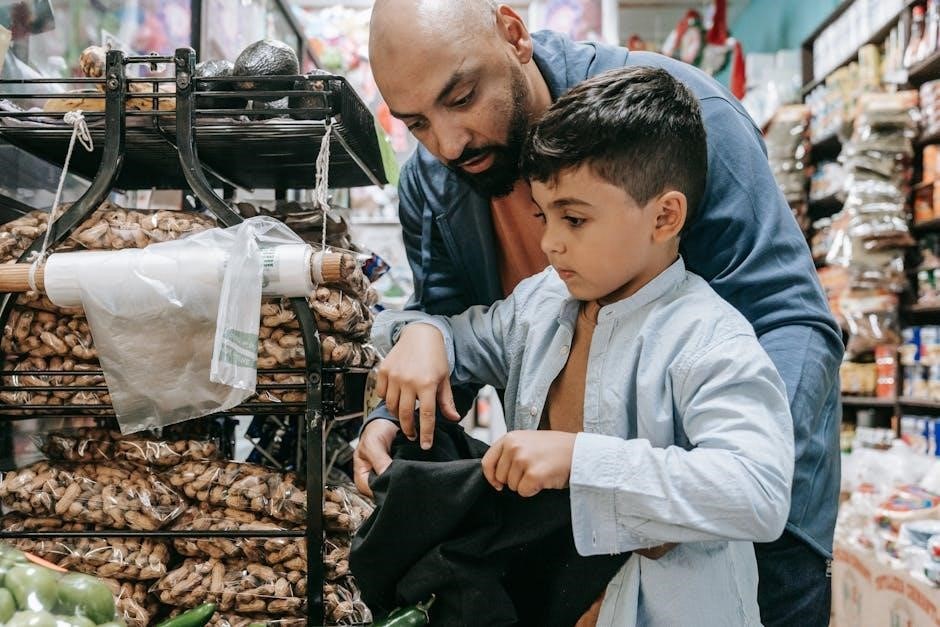
4.2 Behavioral Patterns
Family roles shape behavioral patterns, influencing how individuals interact and respond to challenges. Healthy roles foster adaptability and cooperation, while dysfunctional roles can lead to rigid or harmful behaviors. For instance, the Hero may exhibit perfectionism, while the Scapegoat might develop rebellious tendencies. These patterns often perpetuate family dynamics, affecting how members navigate responsibilities and relationships within the system.
4.3 Long-term Effects
Family roles can have lasting impacts on individuals, shaping their self-perception and relationships. Dysfunctional roles may lead to low self-esteem, difficulty trusting others, or rigid behavioral patterns. Conversely, healthy roles foster resilience and adaptability. Over time, these roles influence career choices, personal growth, and parenting styles, creating a ripple effect that extends beyond the family system into broader life experiences and future relationships.
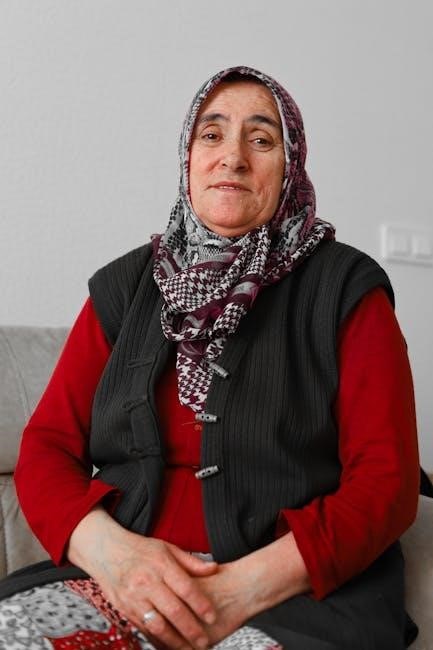
Healthy Family Roles
Healthy family roles are flexible and interdependent, promoting emotional well-being and adaptability. They foster a supportive environment where members can grow and thrive collectively.
5.1 Flexibility in Roles
Flexibility in family roles allows members to adapt to changing circumstances, ensuring the family system remains balanced. It prevents rigidity and enables individuals to take on new responsibilities as needed, fostering growth and resilience. Unlike dysfunctional roles, flexible roles promote emotional well-being and harmony, allowing families to evolve and thrive in dynamic environments.
5.2 Interdependence
Interdependence in family roles ensures that members rely on one another, fostering unity and shared responsibilities. Healthy families thrive when roles are interconnected, promoting teamwork and collective problem-solving. This balance prevents overwhelmed individuals and ensures tasks and emotional support are evenly distributed, maintaining harmony and enabling the family to adapt to challenges collectively.

Cultural and Societal Influences on Family Roles
Cultural norms and societal expectations significantly shape family roles, influencing traditional gender roles and modern shifts in role distribution, reflecting evolving values and expectations over time.
6.1 Traditional Gender Roles
Traditional gender roles are deeply rooted in cultural and societal norms, often assigning men and women specific responsibilities. Men are typically expected to be providers, handling financial and protective duties, while women manage household and childcare tasks. These roles, passed down through generations, shape family dynamics and individual expectations, influencing how members contribute to the family system. While they provide structure, they can also limit flexibility and personal growth.
6.2 Modern Shifts in Role Distribution
Modern societies are witnessing a shift away from rigid gender roles, embracing more flexible and shared responsibilities. Changing societal norms, increased female workforce participation, and evolving expectations of equality have driven this transformation. Families now often distribute roles based on individual strengths and preferences rather than gender, fostering a more balanced and adaptable family system that values collaboration and mutual support.
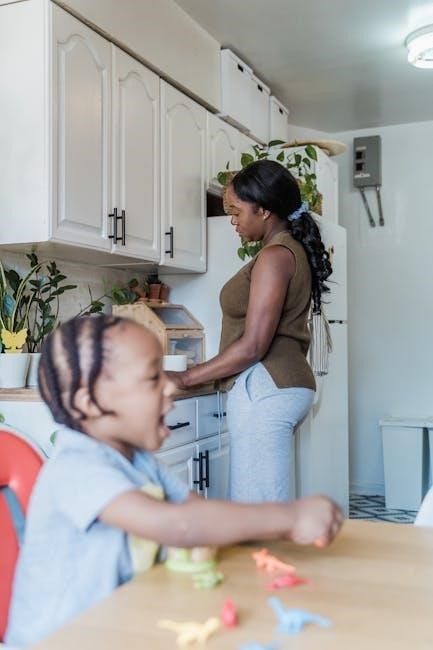
Children’s Roles in the Family
Children’s roles are crucial, involving responsibilities and influencing their development. These roles, such as caretaker or hero, help the family system function, as seen in various family dynamics.
7.1 Responsibilities
Children’s roles often involve responsibilities that support the family system. These may include practical tasks, emotional support, or caregiving. Responsibilities can shape a child’s identity and skills, fostering a sense of contribution. In dysfunctional families, children may take on excessive duties, impacting their development. Healthy families encourage age-appropriate responsibilities, promoting independence and self-esteem while maintaining a balance that allows children to thrive emotionally and socially within the family structure.
7.2 Impact of Family Roles on Child Development
Family roles significantly influence child development, shaping identity, skills, and emotional well-being. Positive roles foster confidence, responsibility, and social competence, while rigid or excessive responsibilities can lead to stress or developmental delays. Adaptive roles promote healthy growth, whereas maladaptive ones may result in emotional or behavioral challenges. Balancing responsibilities with nurturing support is crucial for children to thrive and develop a strong sense of self within the family structure.
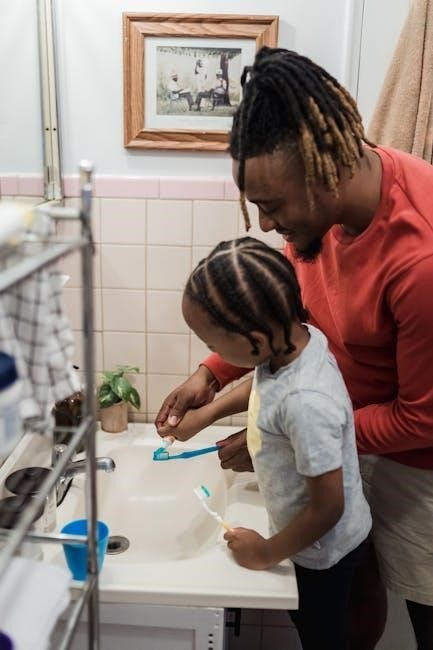
Overcoming Dysfunctional Family Roles
Overcoming dysfunctional family roles involves recognizing patterns, seeking support, and fostering healthier dynamics. Therapy and self-awareness help individuals break free, promoting healing and growth within the family system.
8.1 Recognizing the Role
Recognizing dysfunctional family roles begins with self-awareness and identifying patterns. Understanding roles like the Hero, Enabler, or Scapegoat helps individuals acknowledge their behaviors. These roles often develop as coping mechanisms, providing temporary stability but hindering growth. Honest reflection and external support, such as therapy, are crucial for recognizing and challenging these deeply ingrained patterns.
8.2 Breaking Free from the Role
Breaking free from dysfunctional family roles requires self-reflection, therapy, and boundary-setting. Individuals must challenge ingrained patterns and adopt healthier behaviors. This process involves understanding the root causes of the role and embracing personal growth. Seeking support from professionals or support groups can facilitate healing and foster a more balanced family system. Self-compassion and accountability are key to transitioning into healthier, more fulfilling roles.
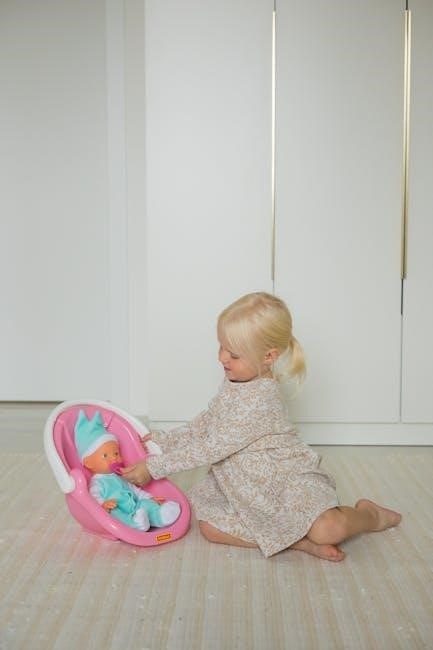
Redefining Family Roles in Modern Times
Modern families are embracing adaptive roles, moving away from rigid traditions. Flexibility, gender equality, and shared responsibilities are reshaping family dynamics, fostering collaboration and balance in contemporary households.
9.1 Adaptive Roles
Adaptive roles in modern families emphasize flexibility and responsiveness to change. They allow individuals to shift responsibilities based on evolving needs and circumstances, fostering resilience and collaboration. Unlike rigid traditional roles, adaptive roles encourage shared responsibilities and mutual support, promoting equality and reducing gender stereotypes. This approach ensures that family members can adapt to societal changes and personal growth, creating a more balanced and harmonious family environment over time.
9.2 Strengths-Based Practice
Strengths-based practice focuses on identifying and leveraging individual and family strengths to enhance resilience and empowerment. This approach emphasizes collaboration, fostering positive family dynamics by building on existing capacities. It encourages families to recognize their unique abilities and resources, promoting a proactive and hopeful perspective. By focusing on strengths, families can better navigate challenges and develop adaptive strategies, leading to more fulfilling and resilient family systems over time.